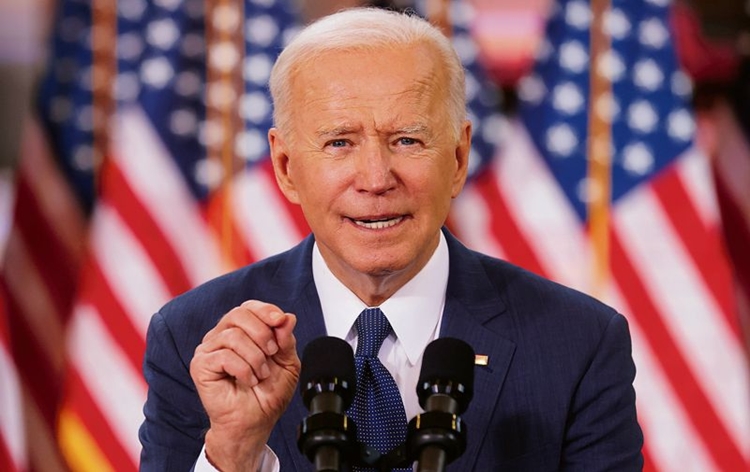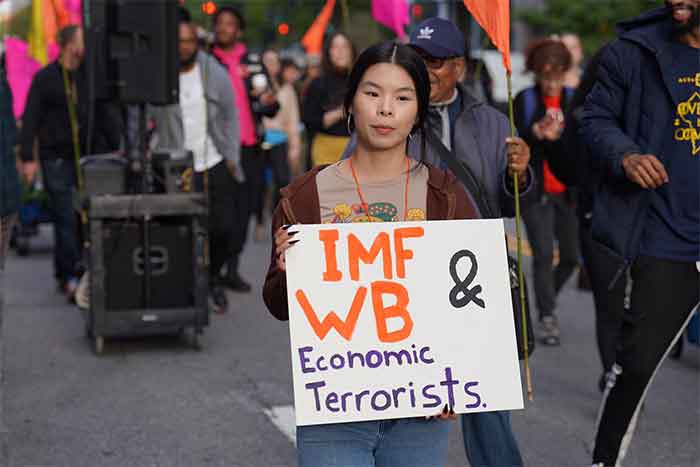





The World Bank has recently reported that the 26 poorest countries, which are home to 40% of the world's most impoverished people, are currently in the worst financial condition since 2006. These nations are grappling with an alarming average debt-to-GDP ratio of 72%, marking an 18-year high. This situation is exacerbated by the lingering effects of the Covid-19 pandemic, which has left these countries poorer than before. Many of them rely heavily on International Development Association (IDA) grants and loans to sustain their economies.
In a significant move to support these struggling nations, President Joe Biden announced a $4 billion commitment to the IDA during a G20 meeting in Rio de Janeiro. This three-year pledge aims to bolster IDA resources amid uncertainty with the incoming Trump administration. The IDA provides low-interest loans and grants to about 75 of the world's poorest countries, and the disbursement of these funds will require Congressional approval, which may face delays until after Trump takes office in January. World Bank President Ajay Banga has set an ambitious goal to raise over US$100 billion by December 6, 2024, aimed at supporting these struggling economies.
The report underscores that two-thirds of these countries are affected by armed conflicts or instability, which severely hinders foreign investment and economic recovery. Additionally, the report highlights that natural disasters have caused average annual losses of 2% of GDP from 2011 to 2023, further necessitating increased investment in resilience and recovery efforts. Recommendations from the World Bank include improving tax collection and enhancing public spending efficiency to better manage these financial strains.
This financial crisis in the poorest nations parallels the ongoing debt crisis in South Asia, where countries like Sri Lanka, Pakistan, and the Maldives are also facing severe economic challenges. Sri Lanka's debt service is currently at 202% of its revenue, while Pakistan's is at 189%. The situation has been aggravated by rising interest rates in the US and EU and the ongoing Ukraine-Russia conflict, which have destabilized economies across the region. Critics of the structural reforms imposed by the IMF and World Bank argue that these measures often lead to increased debt distress rather than alleviating it.
Recent reports indicate that sovereign defaults have peaked, with countries such as Ghana, Sri Lanka, and Zambia struggling under the weight of their debts. In 2022, 26 countries paid more in debt service than they received in new financing, and net negative financial flows for developing countries are expected in 2023. The IMF and World Bank meetings are currently overshadowed by wars, slow economic growth, and the upcoming US election, with the IMF board reviewing plans to disburse $1.1 billion to Ukraine. As the need for coordinated global responses to these crises becomes more urgent, the interconnectedness of these financial challenges highlights the importance of collective solutions to support the world's most vulnerable economies. The World Bank aims to increase its lending capacity by $30 billion, while bond issuance in Europe, the Middle East, and Africa is projected to reach $275-$300 billion. However, liquidity shortfalls threaten emerging economies, hindering development and climate efforts, and protests have erupted in various countries due to economic strain.
In a critical analysis, Ahmed Aminu-Ramatu Yusuf argues that the IMF and World Bank are not genuinely interested in poverty alleviation, claiming their loans create 'hellish debts' and promote debt slavery in underdeveloped countries (UDCs). He criticizes these institutions for their deceptive definitions of poverty, which ignore local contexts and value systems. Yusuf highlights that the IMF and WB are controlled by former colonial powers that benefit from the exploitation of UDCs. He cites a study revealing that UDCs paid $2.5 trillion in interest from 1970-2022, leading to severe debt crises. Furthermore, Yusuf asserts that the conditionalities attached to IMF and WB loans, such as cuts in government spending on essential services, exacerbate poverty rather than alleviate it. He concludes that the true nature of these institutions is to promote harmful indebtedness, not to reduce poverty. [bed6a887] [83ec1e17] [694cc436] [b5503ad7] [d5912cde] [8abd0075]